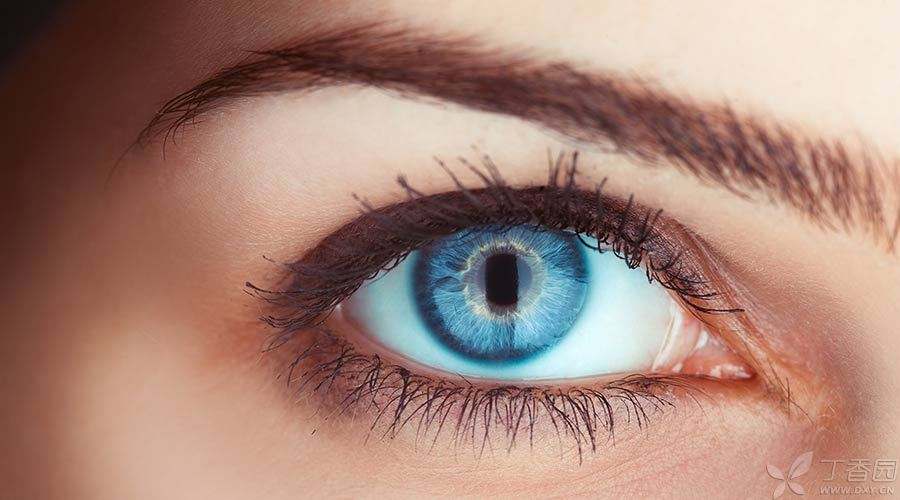
A pair of bright big eyes may be the most representative feature of hyperthyroidism patients. In clinical practice, there are not a few patients who complain of [eyes getting bigger] and finally diagnose [hyperthyroidism]. In life, many beautiful women with big eyes even often receive such a close (ji) heart (du): [Your eyes are so big, it won’t be hyperthyroidism.]
Is there a what relationship between hyperthyroidism and big eyes? Can hyperthyroidism really be an eye-opener? Today, let’s break up this topic.
[Hyperthyroidism] and [big eyes] often go hand in hand.
Hyperthyroidism, or hyperthyroidism, In fact, it is only a state, Not the name of the disease. Graves’ disease, the most common cause of hyperthyroidism, is essentially an autoimmune disorder. When immune cells originally used to resist foreign invaders attack the thyroid gland, It can cause thyroid dysfunction. Similarly, when [one’s own]-eye tissue is attacked by these abnormal immune cells, it will cause a series of eye diseases, which are also called thyroid ophthalmopathy or [Graves ophthalmopathy].
It can be seen from this that hyperthyroidism and thyroid ophthalmopathy are actually injuries to different target tissues (thyroid gland and eyes) caused by the same cause, and the two are associated rather than causal. Reflected in real life, we often see the appearance that [eye enlargement] is always associated with [hyperthyroidism].
True and False [Big Eyes]
Real big-eyed beauties (refer to Zhao Wei, Gao Yuanyuan, Angelina Jolie, etc.) often have the characteristics of wide eyelid fissure, the upper eyelid gently covering the upper edge of the cornea when looking directly, and the lower eyelid flush with the lower edge of the cornea.

[Qiao Xiao Qian Xi, Mei Eye Looking Forward] Who doesn’t want to have such a pair of big watery eyes among the girls who love beauty? But what if they are born with small eyes? [Not long enough, makeup to gather together], eye shadow, mascara, PS tools and other sharp tools came into being, many beautiful girls even use cosmetic surgery to realize their dream of “bright eyes are fond of].
So, with [thyroid ophthalmopathy], can you really make your eyes bigger?
The answer is no, otherwise, the current major medical problems may change from [how to treat] to [how to get].
Thyroid ophthalmopathy can be divided into benign/non-invasive exophthalmopathy and malignant/invasive exophthalmopathy from its pathogenesis. The former is due to the swollen extraocular muscles reducing the pulling force on the eyeball backward, and the smooth muscle spasm and eyelid retraction make the eyeball shift forward to form symmetrical exophthalmopathy. The latter is progressive bilateral or unilateral exophthalmos due to infiltration of lymphoid tissue behind the eyeball and increase of extraocular muscle volume.
It can be seen that thyroid ophthalmopathy causes [exophthalmia] instead of [big eyes], [Vanggang glaring eyes] instead of [beautiful eyes], and the eyes have never become bigger at all.
Alarming [thyroid ophthalmopathy]
Thyroid ophthalmopathy not only cannot enhance aesthetic feeling, but also causes a series of eye discomfort symptoms. Serious cases may become blind without intervention.
In the early stage of the disease, erythema and edema around the orbit, conjunctival edema, orbital inflammation and congestion will occur. Patients often feel dry eyes, foreign body sensation, photophobia, accompanied by eyelid retraction, exophthalmos, diplopia, and eyeball and retrobulbar pain. During this period, symptoms are generally mild and can return to normal after rest and treatment.
However, if the eye lesions continue to progress without timely and effective intervention, the symptoms will worsen irreversibly, resulting in obvious eyeball protrusion, eye movement disorder, corneal ulcer and perforation, optic atrophy, visual function damage, and some serious cases may even lead to blindness.
How to do with thyroid eye disease?
1. Protect your eyes, starting with the details of your life.
- Cultivate good eye hygiene habits. When the eyes have foreign body sensation, stabbing pain or tears, Do not rub your eyes directly with your hands. Avoid reading under poor light conditions. Do not use your eyes for too long. Often do eye movements, Relax the eye muscles, However, attention should be paid to avoid upward gaze and other actions. Wear colored glasses. Prevent light irritation and dust and foreign bodies from infringing on eyes. Especially when exposed to strong sunlight, Sunglasses should be a must-have, People with severe symptoms (such as diplopia) should also wear blindfold. Light diet. Limit the intake of water and salt. Fasting spicy, stimulating food, Drink less. Quit smoking strictly. In the eyes of doctors, Smoking is really harmful but not beneficial. It is inextricably linked to many adverse clinical events. For thyroid ophthalmopathy, Smoking is considered to be a major risk factor for the occurrence and deterioration of eye diseases, Not only does it worsen the condition of eye diseases, But also reduce the therapeutic effect and increase the risk of treatment. It is recommended to lie on your back with a high pillow during sleep. This can relieve the increase of orbital pressure caused by venous reflux obstruction. Alleviate eye symptoms. Use eye drops or eye ointment. If there is eye [white] phenomenon (corneal exposure), it is recommended to use lubricating eye drops during the day and lubricating eye ointment at night. Regular corneal examination in the hospital. Timely detection and treatment of corneal ulcer, panophthalmitis and other pathological changes.
2. Maintain stable thyroid function
Facts have proved that when the thyroid function of patients is abnormal (including hyperthyroidism and hypothyroidism), the prevalence rate of eye diseases is also significantly increased, and the symptoms of eye diseases can be alleviated after the abnormal state of thyroid function is corrected.
3. Non-surgical treatment
Glucocorticoid is currently the first choice for the treatment of thyroid-related ophthalmopathy. Some patients can also choose hormone combined with immunosuppressive agents and radiotherapy.
4. Surgical treatment
When medication fails, Or when the disease progresses to the extent that optic neuropathy, strabismus, eyelid retraction, corneal exposure and the like cannot be solved by drug force alone, A professional ophthalmologist is required to perform the operation. The main purpose of the operation is to maintain the function of the optic nerve, protect the cornea from exposure, and restore the beauty of the eyes. Including orbital decompression, strabismus correction, and eyelid retraction correction.
To sum up, (Graves’ disease) hyperthyroidism and thyroid ophthalmopathy are diseases of different target organs caused by the same cause, and they often occur together. Hyperthyroidism itself is not an eye-opener. Once patients have eye disease-related symptoms, they must see a doctor in time, intervene early under the guidance of doctors, and treat scientifically, so as to ensure our health and beauty.
Editor: Katherine
Author: Zhang Zheng
This article is exclusively authorized to be used by Clove Garden and refuses any other form of reprinting.
